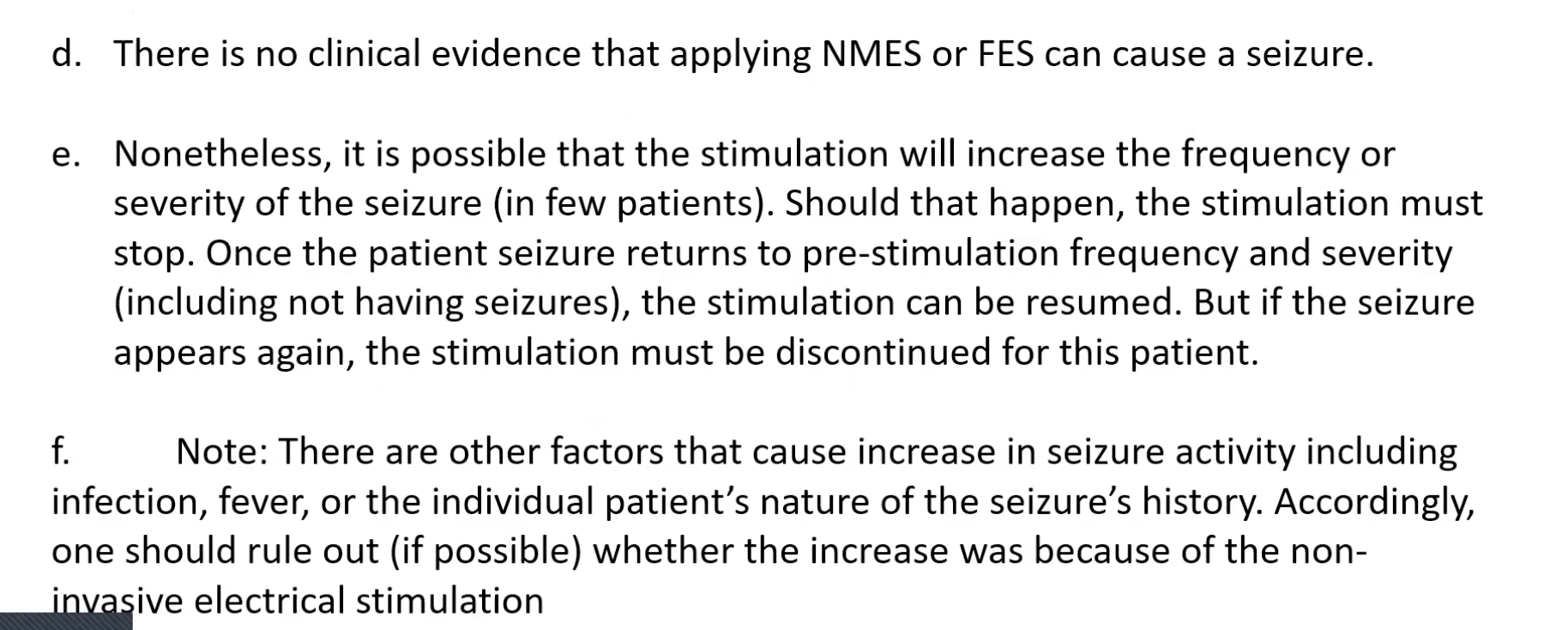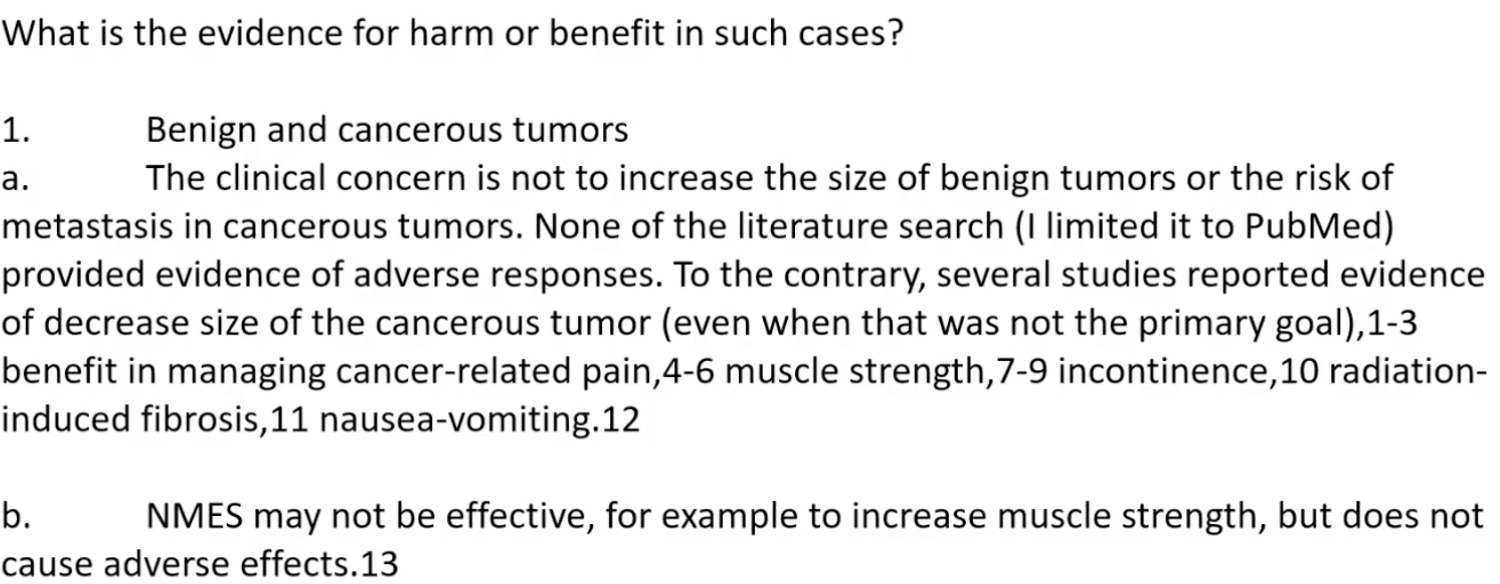Electrical Stimulation Contraindications: Facts and Myth Busting
Amy Bean
Tuesday, June 27th, 2023
#electricalstimulation#nmes#TENS

Before considering using neuro muscular electrical stimulation (NMES), users need to be aware of the contraindications and whether this treatment is safe to use.
A contraindication in medicine is a reason not to use something as it may cause harm.
It would be understandable to presume that there is an agreed set list of contraindications that apply internationally for everyone. Unfortunately this is not the case so in this blog we are going to go through the most commonly agreed contraindications in the UK and discuss each one. By having some knowledge of the reasons behind each one, and any research behind them, it will hopefully help more users to use this evidence based treatment as part of their rehab.
I should acknowledge that this blog was inspired by a recent Webinar on Precautions And Contraindications For Using Electrical Stimulation by IFESS (International Functional Electrical Stimulation Society) . The panel of experts in this field looked at the most commonly agreed contraindications, the research behind them and discussed whether they were still valid contraindications in their clinical opinions.
Pacemaker
Having a pacemaker is considered by many as being a contraindication because of the potential effect the NMES device may have on the pacemaker. The concern is that the electrical stimulation will interfere with the effectiveness of the pacemaker which could be detrimental to the person.
The type of pacemaker and age of the implantation are factors to consider. If it is a bi polar system it is considered more safe to use, and newer devices are designed to be less susceptible to interference.
It is therefore advisable to not instantly rule out the use of NMES with a pacemaker, but seek advice/guidance from a medical professional who is knowledgable about the pacemaker of the person using the stimulation.
There is no literature to suggest that there are any safety issues with using a NMES with a pacemaker, (but bear in mind this may indicate a lack of research in this area). A systematic review was carried out in 2017 looking at this specific topic and the conclusion was “electrical stimulation could be used safely to help drop foot in patients with pacemakers or implanted cardioverter defibrillators” (Badger et al, (2017) )
Epilepsy
Epilepsy according to the Mayo Clinic is a brain disorder causing recurring seizures. Having a single seizure doesn’t mean you have epilepsy. Epilepsy is diagnosed if you’ve had at least two unprovoked seizures at least 24 hours apart. If you are unsure whether you have epilepsy you should seek professional advice before considering using NMES.
Uncontrolled, unmedicated epilepsy is commonly considered a contraindication, certainly in the UK and US. In some countries such as Australia it is not. There is clearly some debate, and grey areas on use of this modality with epilepsy.
What is most important when considering NMES is to discuss the risk factors with the person looking to use this modality, and ideally ongoing communication to monitor any adverse affects. The slide below by Dr Gad Alon during the IFESS webinar perfectly summarises his advice on use in this area and so we have posted it in full :

So, like Pacemakers, epilepsy isn’t an absolute contraindication; it can be used with medical professional intervention to discuss the risks, help with documentation of any seizure history pre application, and provide ongoing monitoring for any adverse effects.
Pregnancy
Pregnancy is universally agreed as an absolute contraindication. Using NMES on the extremities hypothetically could be considered as low risk, however it is unknown what effect the stimulation would have on the foetus (and has never been studied because of the potential harm). Therefore it is contraindication in all circumstances. At least we have one that everyone agrees on!
Cancer
The reason for cancer sometimes being sited as a contraindication, if applied to the active cancer site, is the thought that it could increase the size of the tumour and cause spreading of the cancer through the increase in blood flow that happens with NMES.
Like with Pacemakers, when searching the literature for clinical studies in this area, no evidence was found to show that there was a risk associated with stimulation. And actually to the contrary there were studies where stimulation was used as a prescribed treatment for the cancer.
Again, Dr Gad Alon summarises his literature search for the IFESS webinar below

As with all the above contraindications, use common sense, be aware of the potential risks (even if no research suggests any harm could be caused) and seek advice from a professional overseeing management of the cancer if in any doubt before using NMES.
Fractures
NMES can be used to reduce the risk of Osteponeia and Osteoporosis in Spinal Cord Injuries and is a very common treatment for this long term. It improves the bone quality and therefore reduces the risk of fractures, as explained by Ines Bersch (Head of the International FES Centre®, Switzerland).
If there is already a fracture present, NMES is a contraindication if the fracture is unstable. This is because the stimulation will cause movement in the area due to the nature of how it works and can cause shearing forces in the fracture. This is not the case if the fracture is stable. Therefore if you are not sure on the state of the fracture present in the area you ideally want to use NMES then seek medical advice first as it may cause harm.
As a manufacturer, Saebo list precautions and contraindications in the user manuals for our SaeboStim Pro and SaeboStim One. Manufacturers will always err on the side of caution and any possibility, even if remote, that harm may be caused then it will be a listed risk factor.
Hopefully the above will help to guide discussions on weighing up the potential benefit of using NMES versus the potential harm. As in all therapy, common sense should prevail and open discussions with medical staff with knowledge in the above areas should be encouraged if there is any doubt.
All credit to the 4 speakers from IFESS conducting the webinar which provided the majority of the information on this blog: Dr Ines Bersch, Dr Ian Swain, Dr Gad Alon and Dr Winfried Mayr.